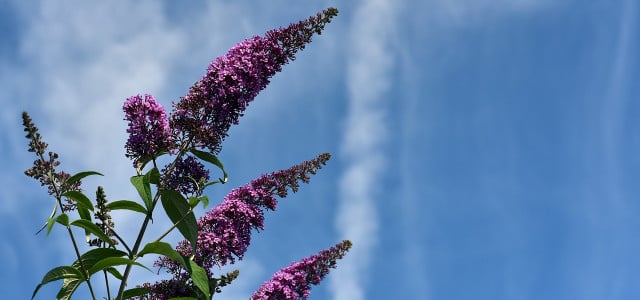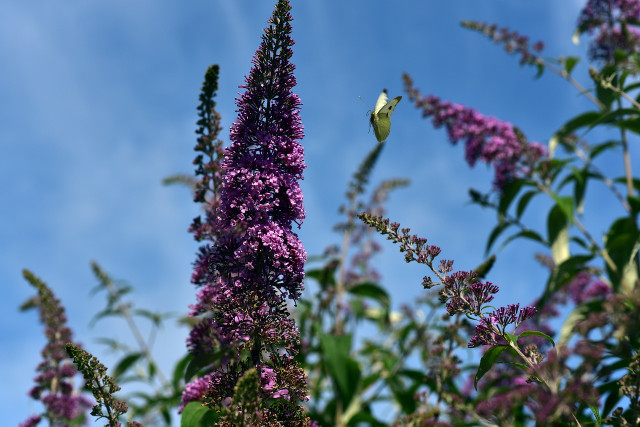
The summer lilac is a very popular ornamental plant because of its abundant flowering. Here you can learn how to grow, care for and prune the Mediterranean plant correctly.
Contents
How to grow summer lilac
The summer lilac originates from the dry steppes of western China and is actually not at all related to our native lilac. The plant can grow up to four meters high and is particularly known for its panicle-shaped, purple inflorescences. The flowers are not only popular with gardeners, butterflies and bumblebees also like to settle on them for food. It is not for nothing that the plant is also called butterfly bush. The summer lilac is also a particularly bee-friendly plant.
The following tips you should follow when growing:
- The summer lilac likes it warm. Therefore, you should find it a location that is as sunny and sheltered from the wind as possible. The flowers are very heat-resistant, so you don’t have to worry about the plant even in strong sunlight.
- The right time: It is best to plant your summer lilac in spring. Young plants in particular should not be grown until May, when there is no frost during the nights.
- The right soil: Summer lilacs thrive best in well-drained, dry soil. To ensure that your plants get enough nutrients, you should lift some humus or compost under the soil.
- Pay attention to planting distance: Summer lilacs need a lot of space to grow, so be sure to provide adequate spacing when planting. If you want to grow summer lilac in a group, you should plant the young plants 80 to 100 centimeters apart in the soil.
- Plant summer lilac in a pot: Normally, summer lilac grows very fast and tall. However, there are also some dwarf species such as the yellow summer lilac. These can be planted very well in a pot.
How to properly care for and fertilize summer lilacs

Summer lilacs usually bloom between July and September. To enjoy extra blooms, make sure your plant gets the proper care.
- Watering: Especially if you have just planted the summer lilac, it needs a lot of water. Unlike other plants, the lilac prefers tap water with a high lime content to rainwater from the barrel. Make sure the soil never dries out completely during the summer months, but also that it doesn’t become waterlogged.
- Fertilize: In June or after pruning, you can fertilize the summer lilac with some compost.
- Wintering: The summer lilac is actually a very robust plant. Only when the frost comes again in spring, it needs some help. The best way to protect it is to cover the soil with a few fir branches.
- Pests: There are relatively few pests and diseases that affect the summer lilac. However, in particularly humid summers, the plant can be affected by powdery mildew. In very warm and dry locations, spider mites or aphids sometimes attack the lilac.
The right pruning for your summer lilac

Despite the fact that the summer lilac grows very quickly, sometimes the big flower in the spring may fail to appear. In this case, radical pruning can help:
- Cut the branches about 30 centimeters above the ground, preferably in April. Do not worry, the plant will quickly sprout new and even higher.
- Don’t forget to remove diseased and old shoots.
- You should also cut off any shoots that are growing inward or crossing each other so that the summer lilac can sprout anew. Usually you should see the first fresh buds after a few days.
Tip: You can cut off withered and dry inflorescences at any time.

